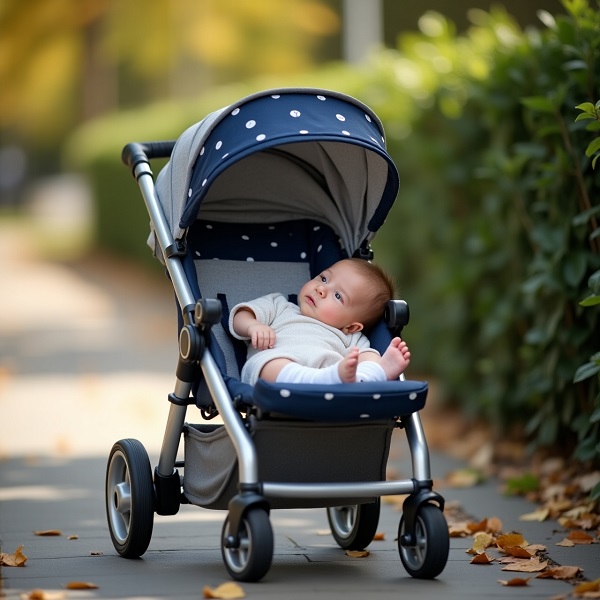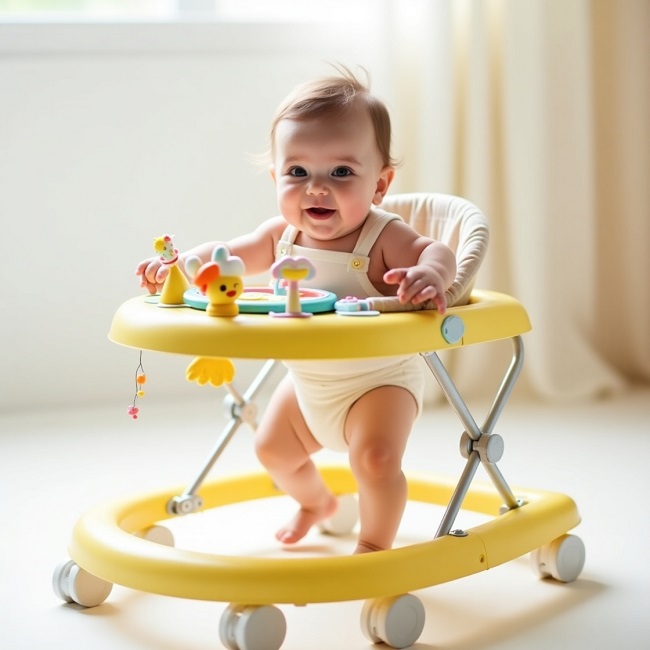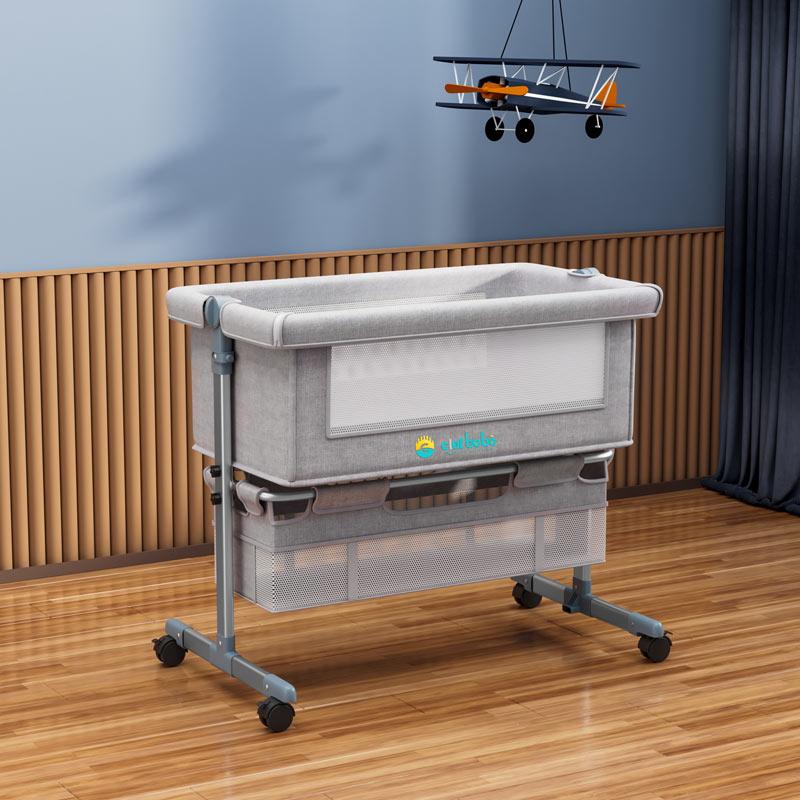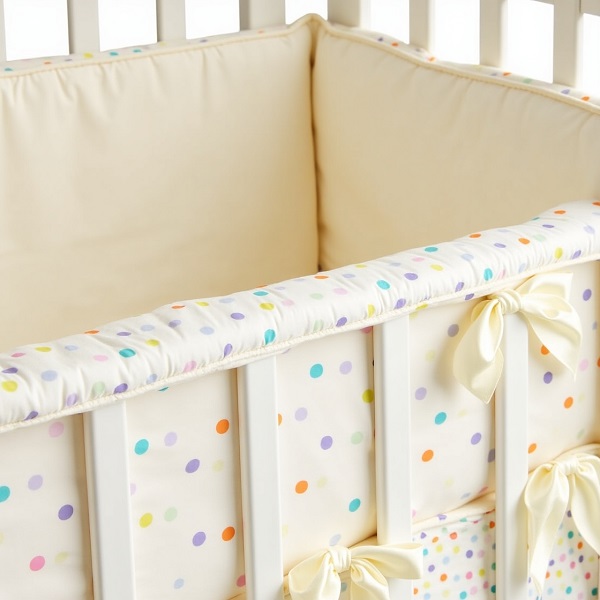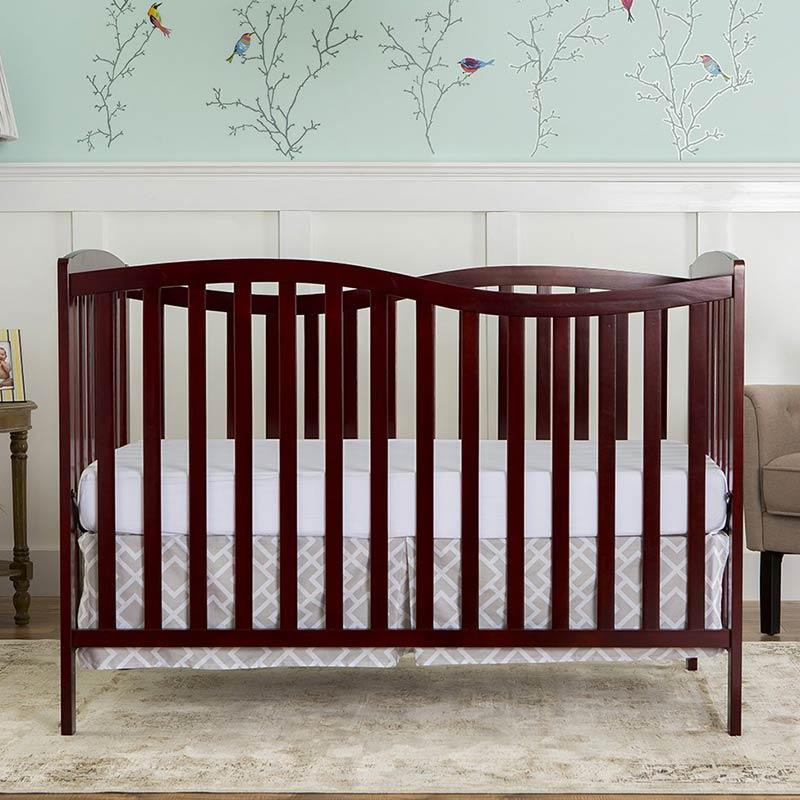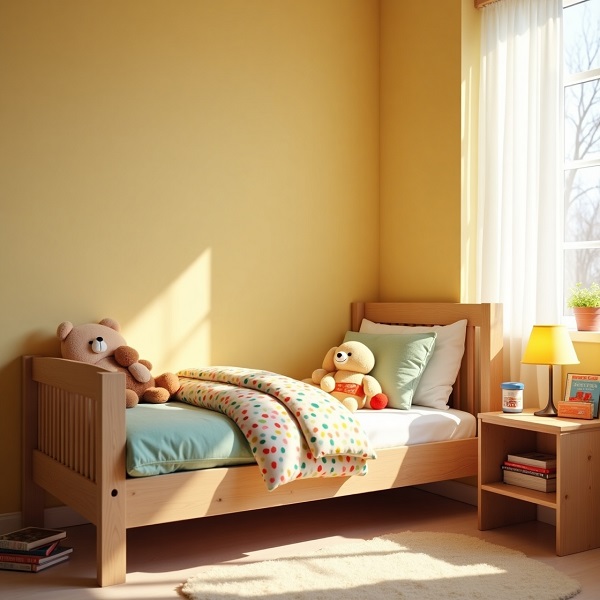We’ve all been there: buckling your baby into the stroller for a quick walk, settling them in the bouncer while you scramble to make dinner, or relying on the swing’s gentle rock to buy you 20 precious minutes. What if the very gear that saves your sanity today might quietly hinder your baby’s growth tomorrow?
Enter Container Baby Syndrome (CBS), a term pediatric therapists use to describe delays caused by too much time in “baby containers” (eg.swings, strollers, seats). These devices are brilliantly helpful in moderation but become stealthy saboteurs when overused. Hours spent confined limit opportunities to wiggle, reach, and push—the very movements that build the strength needed to roll, crawl, and eventually walk.
The issue isn’t about vilifying baby gear—it’s about awareness. The AAP recommends 30–60 minutes of daily tummy time for healthy development, yet many babies spend hours confined in containers.
In this guide, we’ll ditch the guilt and focus on solutions. For example, spot subtle signs of CBS, smart ways to use gear, and simple swaps to turn everyday moments into growth opportunities.
What Is Container Baby Syndrome?
Imagine your baby’s world for a moment. In their first year of life, every stretch, wiggle, and roll isn’t just adorable—it’s a critical building block for their physical and cognitive development. However, when infants spend too much time confined to strollers, bouncers, swings, or other restrictive gear, they miss out on these essential opportunities to grow.
Container Baby Syndrome (CBS) isn’t about occasional gear use—it’s what happens when babies spend too much time confined in seats, strollers, or swings. Pediatric experts use this term to describe delays that pop up when infants miss out on the stretches, kicks, and explorations crucial for building strength and skills.
Containers keep babies in passive, reclined positions that limit natural movement. Over weeks, this can lead to weaker neck and core muscles, delayed milestones like rolling or crawling, and flat spots on the head (called plagiocephaly) from constant pressure on soft skull bones.
The syndrome isn’t about occasional use—it’s about cumulative overuse. A typical day might include an hour in a stroller, another in a bouncer, and extra time in a swing. Add it up, and that’s hours spent restricted versus freely moving.
The American Academy of Pediatrics (AAP) stresses that babies need daily floor time—30–60 minutes of tummy time plus unstructured play—to develop coordination, balance, and curiosity. Without it, they miss chances to push up on their arms, pivot toward sounds, or reach for toys. These aren’t just physical milestones; they’re how babies learn cause-and-effect and build brain connections.
CBS isn’t a lifelong label. With early intervention and adjustments to daily routines, most babies catch up developmentally. The key is recognizing the risks and striking a balance.
Signs of Container Baby Syndrome: What and How to Spot Early Signs?
As a parent, you notice every coo and milestone—but Container Baby Syndrome (CBS) can slip under the radar with subtle, gradual warning signs. Catching these clues early is key, as quick adjustments can prevent long-term issues.
Physical Signs
One of the most noticeable red flags is a flat spot on your baby’s head (plagiocephaly), often visible during baths or cuddles. Unlike temporary marks from sleep positions, these don’t smooth out easily and may feel like a persistent “bald patch” where hair doesn’t grow.
Tight neck muscles (torticollis) can also develop if your baby favors one side due to container positioning. You might notice stiffness during tummy time—like resistance when helping them turn their head.
Delayed motor skills are another giveaway. By 3–4 months, most babies lift their heads during tummy time. If yours struggles here, avoids rolling by 6 months, or seems “stuck” in a slumped C-curve posture in containers, weakened core muscles could be the culprit.
Developmental and Behavioral Clues
CBS isn’t just physical—it can dim your baby’s natural curiosity. Normally, infants grab toys, kick wildly, and pivot toward sounds. A baby overly accustomed to containers might seem oddly passive, content to stay still rather than explore because they might be missing out on vital sensory input.
Watch for lopsided movements, too. Does your baby favor one arm or leg? This asymmetry can signal missed opportunities to strengthen both sides equally.
Fussiness during floor time is another hint. If your little one arches their back, cries when not in a swing, or resists tummy time, it’s often frustration—not stubbornness. Their muscles might lack the strength to make movement comfortable. Also, it could be a sign they need more practice—not less.
How to Spot These Signs?
First, make time each day to watch your baby move freely. During 10–15 minutes of play, check if they push up on their arms, turn their head both ways, or reach for objects. Uneven movements or reluctance to engage are clues.
Second, gently feel your baby’s head during diaper changes or baths. Early flat spots often start as subtle unevenness, like a section that’s smoother or less rounded.
Third, track milestones using the AAP’s guidelines. Most babies roll by 6 months and sit solo by 9 months. Consistent delays? Time to chat with your pediatrician.
Finally, audit container time. If your baby spends more than 1–2 hours daily in strollers, bouncers, or swings (not counting sleep), rethink their routine. Swap some container time for floor play or babywearing.
How to Avoid Container Baby Syndrome?

Rethink Container Time: Treat baby gear like a daily time budget—the AAP recommends limiting equipment like strollers, swings, and bouncers to 1–2 hours total per day (excluding sleep). You should track usage like you would screen time.
Design a Safe “Movement Zone”: Create a baby-friendly exploration area by clearing a corner of your living space. Use a thick play mat for cushioning and add toys that reward movement. This setup reduces reliance on containers while encouraging muscle-building activities like pushing up, rolling, and pivoting.
Stay Alert to Positioning Habits: Babies often develop preferences for turning their heads to one side, especially if they spend time in containers. Break the cycle by alternating their orientation in the crib each night (head at one end, then the other) and switching arms during feedings. During play, place toys or your face on their less-favored side to gently stretch tight neck muscles. If they consistently tilt left, for example, dangle a toy to their right during tummy time.
Know When to Pivot: As your baby grows, their needs change. A newborn might tolerate a swing for 20 minutes, but a 6-month-old ready to crawl will crave more freedom. Regularly reassess their routine: Is floor play increasing as container time decreases? Are they meeting milestones like pushing up or rolling over? Flexibility is your ally.
Can Container Baby Syndrome Be Reversed?
The moment you notice signs of Container Baby Syndrome (CBS)—a flat spot on your baby’s head, stiffness during tummy time, or delayed milestones—it’s natural to feel a surge of worry. But here’s the good news: CBS is often reversible, especially when caught early. With proactive steps and patience, most babies can overcome the physical and developmental effects of prolonged container use.
The Role of Early Intervention
Time is your greatest ally. The younger the baby, the more adaptable their body and brain are to change. For example, mild plagiocephaly (flat head syndrome) in infants under 6 months can often improve significantly with repositioning techniques alone. This involves:
- Alternating the direction your baby faces in the crib to encourage turning their head.
- Holding or carrying them in positions that relieve pressure on the flattened area.
- Minimizing time in containers and maximizing supervised floor play.
Pediatric physical therapists emphasize that early action—ideally before 4–6 months of age—can reduce the need for more intensive interventions later.
When Professional Help Makes a Difference?
If repositioning and increased movement aren’t enough, pediatricians may recommend physical therapy. A licensed therapist can design a tailored program to:
- Strengthen weak neck, shoulder, and core muscles through guided exercises.
- Improve range of motion in stiff joints (e.g., torticollis).
- Teach parents play-based activities to encourage rolling, crawling, and sitting.
In cases of severe plagiocephaly that don’t resolve by 6–8 months, a custom helmet might be suggested. These devices gently reshape the skull over several months, but they’re typically a last resort and work best when combined with active movement strategies.
Long-Term Outlook
Most babies with CBS catch up developmentally within weeks or months of starting interventions. A 2020 review in Pediatrics noted that 95% of mild to moderate plagiocephaly cases improve with conservative treatment, and motor delays often resolve with consistent floor play and therapy.
If you’re thinking, “Did I cause this?”—please don’t. CBS is a modern dilemma rooted in well-meaning choices, not neglect. The fact that you’re reading this and seeking solutions shows you’re doing exactly what your baby needs: adapting, learning, and advocating for their health.
When Should I See a Medical Professional?
Persistent Physical Symptoms
Some issues simply won’t be resolved with repositioning alone. If you notice a flat spot on your baby’s head (plagiocephaly) that doesn’t improve after weeks of reduced container time and varied positioning, consult your pediatrician.
Similarly, stiffness in the neck or shoulders (torticollis) that limits your baby’s ability to turn their head fully in both directions needs evaluation. These symptoms can sometimes indicate underlying muscle tightness or joint issues that require targeted exercises or therapy.
Missed Developmental Milestones
Babies develop at their own pace, but consistent delays in motor skills may signal CBS. The American Academy of Pediatrics (AAP) highlights key milestones, such as:
- Lifting their head during tummy time by 3–4 months.
- Rolling over by 6 months.
- Sitting independently by 9 months.
If your baby struggles with these tasks despite daily floor play, or if they seem unusually frustrated during movement-based activities, a pediatrician can assess whether CBS or another condition is at play.
Asymmetry in Movement or Posture
Does your baby favor one side of their body? For example, they might:
- Always tilt their head to the left.
- Push harder with one leg during crawling attempts.
- Use one arm more frequently to reach for toys.
These asymmetries can stem from prolonged container use and may lead to long-term imbalances if unaddressed. A physical therapist can help correct these patterns through guided exercises.
The sooner CBS is addressed, the easier it is to reverse. Babies’ skulls are most malleable before 6 months, and their brains are primed to adapt to new movement patterns. Delaying a visit risks prolonging discomfort or allowing delays to snowball.
Alternatives to Containers: Promoting Healthy Movement
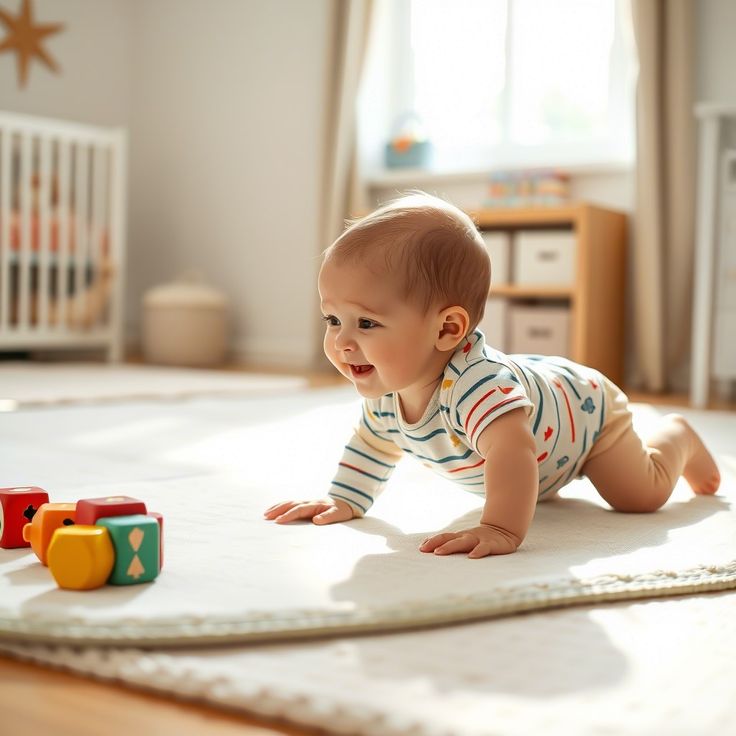
Babywearing
A well-designed, ergonomic baby carrier or wrap allows you to keep your baby close while freeing its body to move. Unlike rigid containers, babywearing promotes healthy hip development (when legs form an “M” position) and engages core muscles as your baby adjusts to your motions.
Floor Play
Start with tummy time as early as their first week, even if it’s just 1–2 minutes at a time. Place a soft, textured mat in a clutter-free area and scatter toys that encourage reaching, rolling, and pivoting. For older babies, create obstacle courses with pillows or foam blocks to motivate crawling.
The AAP notes that floor play not only builds muscle but also sparks problem-solving skills as babies learn to navigate their environment.
Turn Daily Tasks Into Movement Opportunities
You don’t need to carve out extra time for development. You can Integrate movement into routines you’re already doing.
During laundry time, lay your baby near a basket of clothes to grasp and kick fabrics. While cooking, place them on a clean kitchen mat with wooden spoons to bang—strengthening arm muscles as they “help” you prep dinner. For errands, choose a baby carrier over a stroller for short trips, letting them observe the world while staying active.
Encourage Self-Directed Play
Resist the urge to reposition your baby every time they wobble or fuss. Struggling to reach a toy or rollover builds critical skills like balance and persistence. Offer smiles and cheers from the sidelines, but let them experiment—even failed attempts teach cause and effect.
Rethink “Containment” During Sleep
While swings or bouncers might soothe your baby to sleep, always transfer them to a firm, flat surface like a crib or bassinet afterward. This prevents prolonged pressure on their skull and ensures they wake ready to move rather than confined.
Are Strollers, Bouncers, And Swings All Bad?
Let’s clear the air: strollers, bouncers, and swings aren’t villains. They’re tools—designed to keep babies safe, soothe fussiness, and give caregivers a moment to breathe.
The problem isn’t the gear itself; it’s how and how much we use it. Like most parenting choices, the key lies in balance.
Strollers shine in their role as protective cocoons during walks, errands, or navigating crowded spaces. They shield babies from harsh weather, germs, and hazards while offering a window to observe the world. However, overuse can limit opportunities for muscle-building movement. The fix? Use strollers for transportation, not containment. At the park? Let your baby crawl on a blanket afterward.
Bouncers earn their keep as safe spots to park your baby while you cook or use the bathroom. However, prolonged sessions in a semi-reclined position can strain developing hips and limit core engagement. To mitigate risks, cap bouncer sessions to 10–15 minutes and ensure your baby’s hips are supported in an “M” shape, with knees higher than the bottom.
Swings are lifesavers for calming colicky babies or buying time to finish a task. The gentle motion mimics a caregiver’s rocking, offering comfort when nerves are frayed. Yet relying on swings keeps babies passive, potentially contributing to flat spots or delayed motor skills. Reserve swings for fussy moments, not all-day containment, and transfer your baby to a crib or floor mat once they’re soothed.
Let’s ditch the guilt. If using a bouncer lets you cook a healthy meal or a stroller gives you a mental health walk, those are wins. Parenting is about trade-offs, and containers exist to make your life easier—not harder. The key is mindfulness.
Ask yourself: Is this container replacing active time, or complementing it? Could you swap 10 minutes of swing used for floor play now? No one expects you to hover over your baby 24/7. By using containers thoughtfully, you’re not failing—you’re finding your family’s rhythm.
In the end, strollers, bouncers, and swings are like spices: a little enhances the dish; too much ruins it. Trust yourself to find the right mix. After all, you’ve got this.
Conclusion
Container Baby Syndrome (CBS) isn’t a verdict on your choices; it’s a reminder that even well-intentioned tools need mindful use. Strollers, bouncers, and swings aren’t villains, but they’re not substitutes for the irreplaceable magic of free movement. Every wiggle, reach, and roll is a building block for your baby’s future—strong muscles, curiosity, and the joy of discovering their world.
When you notice a flat spot or a delay, remember that early action is powerful. Repositioning, tummy time, and professional guidance can steer development back on track, often with remarkable results.
Recommended Related Articles:

